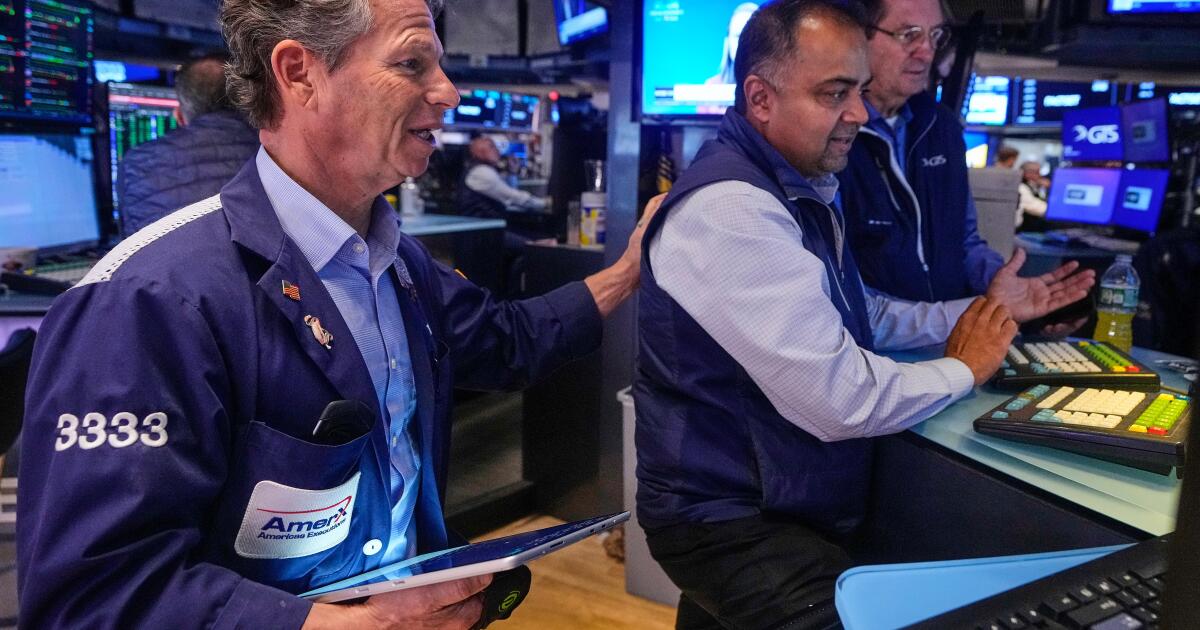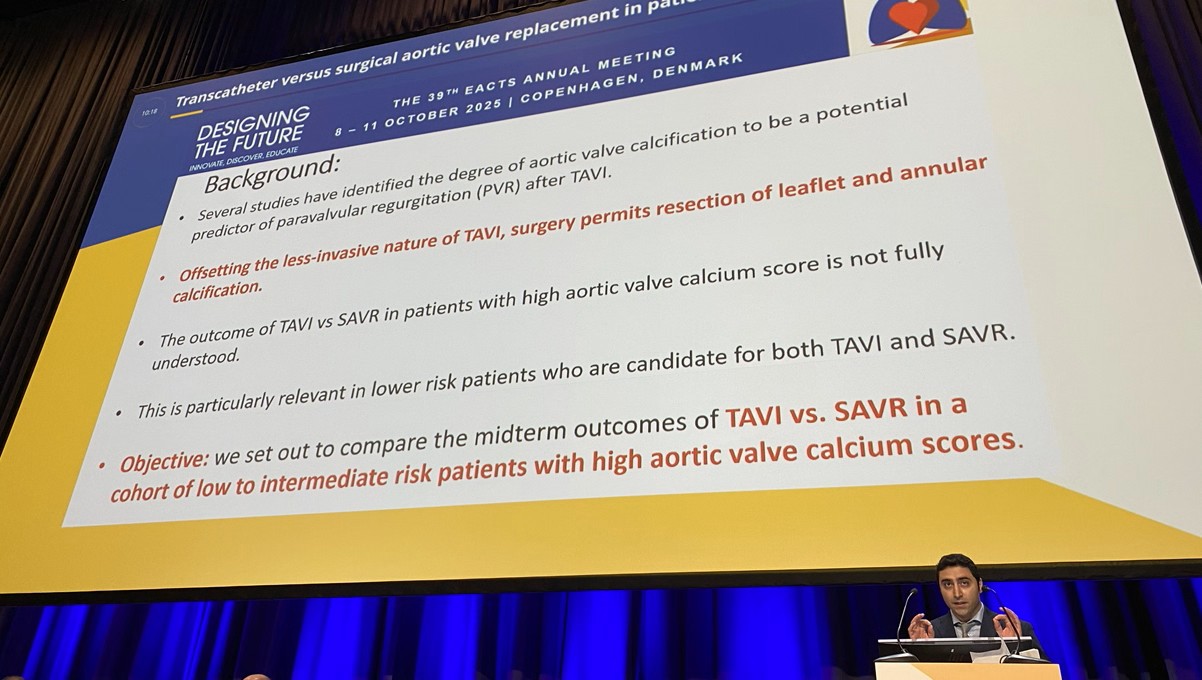This request seems a bit unusual, so we need to confirm that you’re human. Please press and hold the button until it turns completely green. Thank you for your cooperation!
Blog
-
Just a moment…
Just a moment… -

Zanzalintinib Plus Atezolizumab Improves OS in Previously Treated Metastatic CRC
The combination of zanzalintinib (XL092) and atezolizumab (Tecentriq) improved overall survival (OS) compared with regorafenib (Stivarga) in patients with previously treated metastatic colorectal cancer (CRC), according to findings from the phase 3 STELLAR-303 trial (NCT05425940) presented at the
2025 ESMO Congress and published concurrently in The Lancet.Across the intention-to-treat (ITT) population, data showed a median OS of 10.9 months with the zanzalintinib combination vs 9.4 months with regorafenib (HR, 0.80; 95% CI, 0.69-0.93; P = .0045). An interim analysis of findings in a subset of patients without liver metastases demonstrated a median OS of 15.9 months vs 12.7 months in each respective arm (stratified HR, 0.79; 95% CI, 0.61-1.03; P = .087).
Investigators noted an OS improvement with zanzalintinib/atezolizumab vs regorafenib across most key subgroups, which included patients from Asia (HR, 0.77; 95% CI, 0.59-1.00) and the rest of the world (HR, 0.82; 95% CI, 0.68-0.99), as well as those with RAS wild-type (HR, 0.79; 95% CI, 0.61-1.01) and RAS-mutated disease (HR, 0.80; 95% CI, 0.66-0.98). Additionally, the experimental combination improved OS for patients with (HR, 0.78; 95% CI, 0.65-0.94) and without liver metastases (HR, 0.77; 95% CI, 0.59-1.01); this benefit extended to those with (HR, 0.80; 95% CI, 0.68-0.95) and without prior anti-VEGF antibody therapy (HR, 0.80; 95% CI, 0.56-1.15).
The median progression-free survival (PFS) across the ITT population was 3.7 months with zanzalintinib/atezolizumab and 2.0 months with regorafenib; statistical significance for PFS could not be claimed at the time of analysis per prespecified hierarchical testing strategy (HR, 0.68; 95% CI, 0.59-0.79). The experimental combination generally conferred PFS improvements across patient subgroups.
Data showed an objective response rate (ORR) of 4% (95% CI, 2%-6%) in the zanzalintinib/atezolizumab arm, which consisted entirely of partial responses (PRs). Additionally, the ORR was 1% (95% CI, 0%-3%) in the regorafenib arm, which consisted entirely of PRs. The disease control rate (DCR) in the experimental and control arms was 54% (95% CI, 49%-58%) vs 41% (95% CI, 36%-45%), respectively.
“STELLAR-303 is the first phase 3 trial to show improved OS with an immune checkpoint inhibitor [ICI]–based combination in metastatic CRC that is not microsatellite instability–high [MSI-H] or mismatch repair deficient [dMMR]. The combination significantly prolonged OS compared to regorafenib in patients with previously treated metastatic CRC,” presenting author Anwaar Saeed, MD, a professor in the Department of Medicine of the Division of Hematology and Oncology at the University of Pittsburgh Medical Center and UPMC Hillman Cancer Center, stated in the presentation.1 “The combination of zanzalintinib and atezolizumab represents a potential novel chemotherapy-free for heavily pretreated [patients with] metastatic CRC in need of more improved therapy. The trial continues to the planned final OS in the subset of patients without liver metastases.”
In the open-label phase 3 STELLAR-303 trial, 901 patients with metastatic CRC documented to not have MSI-H or dMMR status were randomly assigned 1:1 to receive zanzalintinib at 100 mg orally each day plus atezolizumab at 1200 mg intravenously every 3 weeks (n = 451) or regorafenib at 160 mg orally once day on days 1 to 21 of each 28-day cycle (n = 450).
The trial’s dual primary end points were OS in the ITT population and among patients without liver metastases. Key secondary end points included PFS, ORR, and safety.
Patients 18 years and older with metastatic disease that had radiographically progressed on, was refractory to, or showed intolerance to prior standard-of-care treatment including fluoropyrimidine plus irinotecan and oxaliplatin with or without an anti-VEGF antibody, an anti-EGFR antibody, and a BRAF inhibitor were eligible for enrollment on the trial. Investigators stratified patients based on geographic region, RAS mutation status, and presence of liver metastases.
The median age was 60 years (range, 29-84) in the zanzalintinib/atezolizumab arm and 60 years (range, 29-85) in the regorafenib arm, with most patients from each being male (58% vs 60%), White (55% vs 53%), and from regions outside of Asia (65% vs 65%). Most patients from each respective arm had an ECOG performance status of 1 (53% vs 55%), a presence of liver metastases (59% vs 56%), BRAF wild-type status (75% vs 78%), and RAS-mutated disease (59% vs 60%). Nearly all patients across both arms received prior treatment with fluoropyrimidine plus irinotecan and oxaliplatin (>99% vs 100%).
The median time from random assignment to first subsequent line of anticancer therapy was 4.5 months (range, 0.2-20.4) in the zanzalintinib/atezolizumab arm and 3.7 months (range, 0.1-17.6) in the regorafenib arm; 44% and 42% of patients in each arm received subsequent treatment. Most patients in each respective arm received subsequent therapy with TAS-102 (27% vs 25%), bevacizumab (Avastin; 20% vs 20%), and TAS-102 in combination with bevacizumab (16% vs 16%).
Any-grade treatment-related adverse effects (TRAEs) occurred in 95% of the zanzalintinib/atezolizumab arm and 92% of the regorafenib arm; 57% and 42% from each experienced serious AEs, and 26% and 10% had serious TRAEs. Overall, 18% and 15% of patients in each arm had AEs resulting in treatment discontinuation, with 61% vs 40% requiring dose reduction of zanzalintinib and regorafenib, respectively, due to toxicity. Investigators noted treatment-related deaths due to intestinal perforation (n = 2) with zanzalintinib, pneumonitis (n = 1) and renal failure (n = 1) with atezolizumab, altered state of consciousness (n = 1) with zanzalintinib plus atezolizumab, and jejunal perforation (n = 1) with regorafenib.
In the zanzalintinib/atezolizumab and regorafenib arms, respectively, the most common AEs included diarrhea (50% vs 24%), hypertension (34% vs 26%), fatigue (33% vs 20%), nausea (31% vs 13%), and decreased appetite (30% vs 20%).
References
- Saeed A, Park YS, Tabernero J, et al. Zanzalintinib plus atezolizumab (zanza + atezo) vs regorafenib (rego) in patients (pts) with previously treated metastatic colorectal cancer (mCRC): primary overall survival (OS) analysis from the randomized, open-label, phase 3 STELLAR-303 study. Presented at the European Society for Medical Oncology (ESMO) Congress 2025; October 17-21, 2025; Berlin, Germany. LBA30.
- Hecht JR, Park YS, Tabernero J, et al. Zanzalintinib plus atezolizumab versus regorafenib in refractory colorectal cancer (STELLAR-303): a randomised, open-label, phase 3 trial. The Lancet. Published online October 19, 2025. doi:10.1016/S0140-6736(25)02025-2
Continue Reading
-

‘DEADBEAT’ Delivered a Raw Communal Party with Tame Impala and The Dare in Brooklyn — Spotify
DEADBEATS wasn’t your typical gathering. Drawing inspiration from bush doofs, early grunge, and underground festival culture, fans turned the Brooklyn pier into a dance floor as the sun dropped behind the skyline.
Kevin took the…
Continue Reading
-

West Ham 0-2 Brentford (Oct 20, 2025) Game Analysis
Igor Thago has made a strong start to the season.
West Ham fans picked the right night to stage a boycott as their side slumped to a dispiriting 2-0 defeat at home to Brentford.
Goals from Igor Thiago and Mathias Jensen were enough to secure a…
Continue Reading
-

Apple’s rally pulls Wall Street to the cusp of its record
Stocks rallied on Monday to the cusp of their records.
The Standard & Poor’s 500 climbed 1.1% and pulled within 0.3% of its all-time high set this month. The Dow Jones Industrial Average jumped 515 points, or 1.1%, and the Nasdaq composite gained 1.4%.
Apple led the way and rose 3.9% amid optimism about demand for its latest iPhone design. It was the strongest force lifting the S&P 500 and set its own record high.
Cleveland-Cliffs jumped 21.5% after the steel company’s chief executive, Lourenco Goncalves, said it would provide details soon about a potential deal with a major global steel producer that could mean bigger profits. He also said his company has potentially found signs of rare earths at sites in Michigan and Minnesota.
Such materials have grabbed the global spotlight after China recently put curbs on the export of its own rare earths, a move that President Trump characterized as hostile. Trump’s ensuing threat of higher tariffs triggered big swings for Wall Street, but the concerns eased a bit after he said such high tax rates on Chinese imports are unsustainable.
Another source of worry for Wall Street, from the banking industry, also appears to be easing. Stocks of smaller and midsize banks climbed Monday, recovering some of their losses after a couple raised alarm bells last week by warning about potentially bad loans they’ve made.
Zions Bancorp. gained 4.7% Monday after its 5.1% drop last week, when it said it had found “apparent misrepresentations and contractual defaults” related to a couple of borrowers.
Amazon’s stock held up despite a widespread outage of its cloud computing service that caused disruption for internet users around the world Monday. Amazon’s stock rose 1.6%.
All told, the S&P 500 added 71.12 points to 6,735.13. The Dow Jones Industrial Average climbed 515.97 to 46,706.58, and the Nasdaq composite gained 310.57 to 22,990.54.
This week features a raft of big names reporting their latest quarterly results, including Coca-Cola on Tuesday, Tesla on Wednesday and Procter & Gamble on Friday.
The pressure is on companies broadly to show that their profits are growing after a torrid run of 35% for the S&P 500 from a low in April. Delivering bigger profits is one of the easiest ways for companies to quiet criticism that stock prices have gone too high. The other is for stock prices to fall.
Corporate profit reports have also taken on more importance because they offer windows into the strength of the U.S. economy when the federal government’s shutdown has delayed important economic updates.
That’s making the job of the Federal Reserve more difficult, as it tries to decide whether high inflation or the slowing job market is the bigger issue for the economy. Fed officials have indicated they’re likely to cut rates several more times in order to give the economy a boost. But that could be a mistake if inflation worsens, because low interest rates can push it even higher.
On Friday, the U.S. government will issue an update for inflation during September. The report was supposed to arrive earlier in month, and the Social Security Administration needs the numbers to calculate cost-of-living adjustments for beneficiaries. But the government also said, “No other releases will be rescheduled or produced until the resumption of regular government services.”
In the bond market, Treasury yields held relatively steady. The yield on the 10-year Treasury eased to 3.98% from 4.02% late Friday.
In stock markets abroad, indexes rose across much of Europe and Asia.
Japan’s Nikkei 225 jumped 3.4%, after its governing Liberal Democrats found a new coalition partner, securing support for its leader Sanae Takaichi to become the country’s prime minister. Investors expect Takaichi, who would also be Japan’s first female prime minister, to push for low interest rates, higher government spending and other policies that could help the market.
Indexes rose 2.4% in Hong Kong and 0.6% in Shanghai after China reported its economy grew at a 4.8% annual pace in the last quarter, supported by relatively strong exports as companies increased shipments to markets other than the U.S.
Still, it was the slowest pace in a year. The world’s second-largest economy is still struggling to emerge from a prolonged downturn in its property market and to encourage consumers and businesses to spend more.
Choe writes for the Associated Press.
Continue Reading
-

Reassuring findings from Canadian study on bictegravir safety during pregnancy
Bictegravir belongs to a class of anti-HIV drugs called integrase inhibitors. It is co-formulated into one pill called Biktarvy, which contains the following medicines:
- bictegravir
- TAF (tenofovir alafenamide)
- FTC (emtricitabine)
In clinical trials,…
Continue Reading
-

Oropharyngeal cancer incidence is surprisingly elevated in people with HIV, meta-analysis finds
If you typically don’t consider oropharyngeal cancer as a potential risk among your patients living with HIV, results from a new meta-analysis suggest it’s time for a rethink. Incidence of this HPV-associated cancer was unexpectedly high in…
Continue Reading
-
Just a moment…
Just a moment… This request seems a bit unusual, so we need to confirm that you’re human. Please press and hold the button until it turns completely green. Thank you for your cooperation!
Continue Reading
-

SAVR Bests TAVI in Patients With Highly Calcific Aortic Valves
The results underscore the need to perform CT imaging when deciding between procedures in patients with aortic stenosis.
COPENHAGEN, Denmark—Among patients with severe aortic stenosis at low- or intermediate-risk for surgery who also have very calcified aortic valves, SAVR is associated with lower risks of all-cause mortality, paravalvular regurgitation, and heart failure hospitalization compared with TAVI, according to new single-center data.
“[A] calcium score could potentially be an important criteria to consider when deciding between TAVI versus SAVR in low- and intermediate-risk patients,” said Fadi Hage, MD (Lankenau Medical Center, Wynnewood, PA), who presented the findings at the 2025 European Association for Cardio-Thoracic Surgery meeting. “Further investigation into predictors of outcomes in lower-risk patients is warranted to improve patient selection and [make] a more informed heart team discussion.”
Session moderator Alicja Zientara, MD (Universitätsklinikum Freiburg, Germany), said the results highlight the need for imaging in assessing patients for TAVI.
“It’s not only about the clinical risk factors of patients and choosing the right valve, but very much about imaging and evaluating if a TAVR is very well feasible for a patient,” she told TCTMD. “We know that there is a risk of aortic regurgitation and there is a risk of pacemaker, and not every patient necessarily is the right one for this kind of treatment. So, we as surgeons have to work very much on implementing regular imaging in our daily practice to also evaluate the valve, like cardiologists do.”
Better Outcomes With SAVR
The analysis included 227 patients who underwent TAVI (mean age 82 years; 77% male) and 99 who had SAVR (mean age 68 years; 88% male) at their institution between June 2021 and December 2023. All patients were considered low-to-intermediate risk for surgery and had a high aortic valve calcium score (≥ 3,000 Agatston units). More patients in the TAVI arm had peripheral vascular disease (20% vs 6%) and fewer had bicuspid aortic valve anatomy (4% vs 39%) than in the surgery arm.
In a propensity score-matched analysis, survival at 2 years was higher in the SAVR arm compared with TAVI (HR 0.17; P = 0.001). The same relationship was seen for freedom from paravalvular regurgitation (HR 0.05; P = 0.001) and heart failure rehospitalization (HR 0.33; P = 0.045). Unadjusted analyses showed advantages for SAVR over TAVI with regard to survival and freedom from paravalvular regurgitation, but not freedom from heart failure rehospitalization.
There was a higher risk of new permanent pacemaker with TAVI compared with SAVR at 30 days (16% vs 6%; P = 0.01), but a lower rate of postoperative transfusion (7% vs 36%; P < 0.001).
During the discussion, session panelist Ferdinand Vogt, MD (Paracelsus Medical University Nürnberg, Germany), pointed out a challenge for surgeons. “In the real world, we don’t have for every surgical patient an Agatston score,” he said, questioning whether this creates a “bias” in real-world practice when patients are deciding between TAVI and surgery.
“It would be an important thing to consider,” Hage responded, adding that it’s not “very difficult to get” this information.
In an informal poll of the audience, about one-third in the room raised their hands indicating that they do send patients for calcium score imaging before the procedure.
Zientara said she was “a little” surprised by how few of the attendees use this kind of imaging in their workups. “But on the other hand, it’s always a hot topic,” she added. “We have new guidelines for the treatment of those patients where there are different opinions.”
Panelist Gregory Fontana, MD (Cardiovascular Institute of Los Robles Health System, Thousand Oaks, CA), commented that CT scans prior to SAVR have “become the gold standard” at his institution.
Hage, too, said he calculates his own CT measurements for each patient, enabling him to be “nonbiased.” As surgeons, he added, “we should select the right procedure for the right patients.”
Continue Reading
-

Duffy says NASA will open Artemis 3 lander contract to competition
WASHINGTON — NASA’s acting administrator says he plans to “open up the contract” SpaceX holds to land astronauts on the moon for the Artemis 3 mission because the company has fallen behind schedule.
In appearances on CNBC and Fox News on Oct. 20, NASA Acting Administrator Sean Duffy said NASA would allow other companies to compete to land astronauts on the moon for Artemis 3, a mission currently assigned to SpaceX’s Starship under a Human Landing System (HLS) contract awarded in 2021.
“SpaceX had the contract for Artemis 3,” Duffy said on CNBC. “The problem is they’re behind. They push their timelines out, and we’re in a race against China. The president and I want to get to the moon in this president’s term.”
“So, I’m going to open up the contract,” he continued. “I’m going to let other space companies compete with SpaceX, like Blue Origin, and again, whatever one can get us there first, to the moon, we’re going to take.”
Duffy made similar remarks on Fox News. “SpaceX has the contract. SpaceX is an amazing company. They do remarkable things, but they’re behind schedule,” he said. “So, I’m in the process of opening that contract up.”
“We’re going to have a space race in regard to American companies competing to see who can actually get us back to the moon first,” he said.
Duffy did not explain how such a “space race” would work or how it would be funded. Asked for further details, Bethany Stevens, NASA’s press secretary, provided only transcripts of Duffy’s television appearances. Most of NASA’s public affairs staff are currently furloughed because of the government shutdown that began Oct. 1.
The comments are the first public acknowledgment by NASA’s acting leader that development of the HLS version of Starship is behind schedule. Duffy previously maintained that Artemis 3 would launch in 2027, the agency’s official target, even as multiple Starship test flight failures earlier this year made that timeline increasingly unlikely.
In late July, Duffy told social media influencers attending the Crew-11 launch that SpaceX executives, including company president Gwynne Shotwell, assured him Starship would be ready for Artemis 3. “They feel very comfortable on Starship. They feel like they’re on pace for the lander,” he said then. “They said if there’s a holdup for Artemis 3, it’s not going to be them.”
After former NASA Administrator Jim Bridenstine told a Senate committee in September it was unlikely the United States would return humans to the moon before China’s first crewed landing, Duffy pushed back. “We are going to beat the Chinese to the moon. We are going to make sure that we do this safely. We’re going to do it fast. We’re going to do it right,” he said in an internal NASA town hall, without suggesting a change in approach for Artemis 3.
In his Oct. 20 interviews, Duffy acknowledged that Artemis 3 likely would not launch in 2027. On CNBC, after discussing Artemis 2’s planned launch as soon as next February, he said that “Artemis 3 comes a couple years after that.”
One of the competitors Duffy mentioned was Blue Origin, which has a separate HLS award to develop its Blue Moon Mark 2 lander for missions beginning with Artemis 5. The company reportedly has studied ways to adapt its smaller Blue Moon Mark 1 lander for a crewed mission, although one industry source described those concepts as “jury-rigged” and noted that Mark 1 currently cannot lift off from the lunar surface with any useful payload.
Other companies are also examining lunar lander concepts. “Throughout this year, Lockheed Martin has been performing significant technical and programmatic analysis for human lunar landers that would provide options to NASA for a safe solution to return humans to the moon as quickly as possible,” Bob Behnken, vice president of exploration and technology strategy at Lockheed Martin Space, said in a statement.
“We have been working with a cross-industry team of companies, and together we are looking forward to addressing Secretary Duffy’s request to meet our country’s lunar objectives,” he said, without providing details about the Lockheed lander concept.
SpaceX Chief Executive Elon Musk appeared unconcerned about potential competition. “They won’t,” he said in a social media post responding to a comment that it was “silly” to think another company would have a lander ready before Starship. “SpaceX is moving like lightning compared to the rest of the space industry.”
“Moreover, Starship will end up doing the whole moon mission. Mark my words,” he added.
Related
Continue Reading